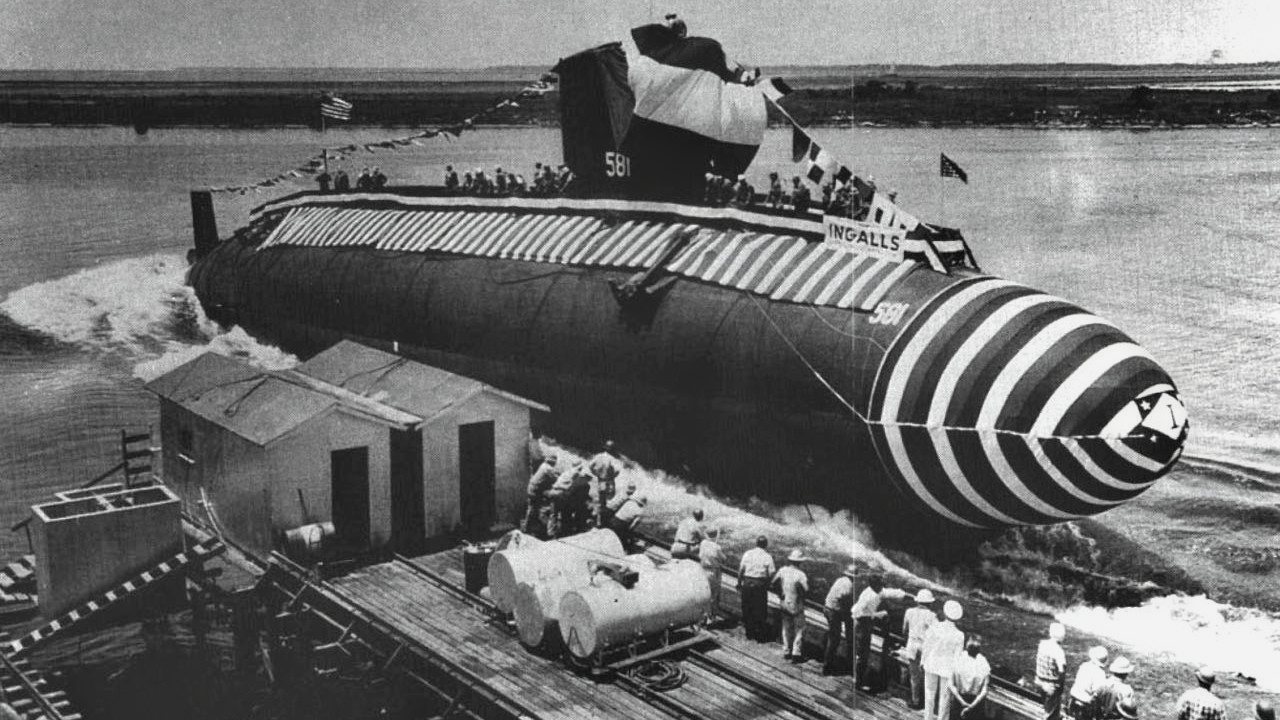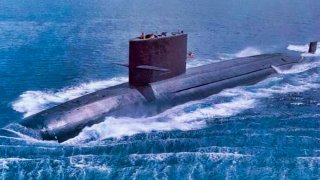Barbel-Class: The Navy's Last Non-Nuclear Submarines Were No Joke
USS Blueback was also notable for being just one of three Barbel-class boats to be constructed, but she is also the only of the three to be maintained as a museum ship.
Meet the Barbel-Class: Today, the United States Naval Submarine Force consists of 53 fast attack submarines, 14 ballistic missile submarines – which currently carry more than 54 percent of the U.S.' nuclear deterrent arsenal – and four guided-missile submarines. All are nuclear-powered.
While a number of nations around the world, including near-peer adversaries China and Russia, as well as North Korea and Iran, operate diesel-electric submarines, the U.S. Navy retired the last of its conventionally-powered boats more than three decades. The last combat-capable diesel-electric attack submarine was the USS Blueback (SS-581), which was only decommissioned in 1990 – seventeen years before the research submarine USS Dolphin (AGSS-555) was finally retired.
The Barbel-Class
Laid down by Ingalls Shipbuilding Corporation of Pascagoula, Mississippi in April 1957 and launched in May 1959, SS-581 was the final non-nuclear submarine to enter service in the U.S. Navy and was truly the last of her kind. Serving until October 1990, she was also the final conventionally-powered combat-capable submarine to be decommissioned.
USS Blueback was also notable for being just one of three Barbel-class boats to be constructed, but she is also the only of the three to be maintained as a museum ship.
The class was notable in that it actually incorporated numerous, even radical engineering improvements over the previous diesel-electric subs, including the first to be built with the "teardrop-shaped" hull that had been tested on the USS Albacore (AGSS-569), as well as the first to feature a single propeller. The hull design was critical in that it increased underwater speed dramatically while it also enabled the submarine to be far more maneuverable. Additionally, the Barbel-class utilized a combined control room, attack center, and conning tower in the same space in the hull.
Barbel-Class: Notable Blueback Accomplishments
During her 31 years in service with the U.S. Navy, USS Blueback participated in Pacific Fleet operations, which included a transiting of the Panama Canal. In September 1961, she also set a record by traveling 5,340 miles from Yokosuka, Japan to San Diego entirely submerged.

The submarine also earned two battle stars for her service in the Vietnam War.
Shortly before her decommissioning in 1990, USS Blueback was provided by the U.S. Navy for use in the film The Hunt for Red October, based on the Tom Clancy novel of the same name. In the movie, she stood in for a Soviet submarine, while a film crew was allowed to film in the torpedo room, with some of her crew even said to have been paid to wear Soviet Navy uniforms! It wasn't the first pop-culture appearance for the submarine, as SS-581 had previously appeared in the 1970s TV series Hawaii Five-O.
Babel-Class: Preserving History
After her decommissioning, USS Blueback was struck from the Naval Vessel Register. In February 1994, the boat was acquired by the Oregon Museum of Science and Industry (OMSI), which towed her back to Portland. She serves as a maritime memorial and is an interactive part of the museum.
Today, visitors can walk through the 219-foot submarine to get a glimpse of how the crew of 85 sailors and officers lived on the boat. There are two tours for guests – a basic 45-minute guided tour and a two-hour long tour that is guided by a submarine veteran, who provides insight into the technical workings of the sub.
In September 2008, USS Blueback was even added to the National Register of Historic Places.
Expert Biography
Peter Suciu is a Michigan-based writer who has contributed to more than four dozen magazines, newspapers, and websites with over 3,000 published pieces over a twenty-year career in journalism. He regularly writes about military hardware, firearms history, cybersecurity, and international affairs. Peter is also a Contributing Writer for Forbes. You can follow him on Twitter: @PeterSuciu.


